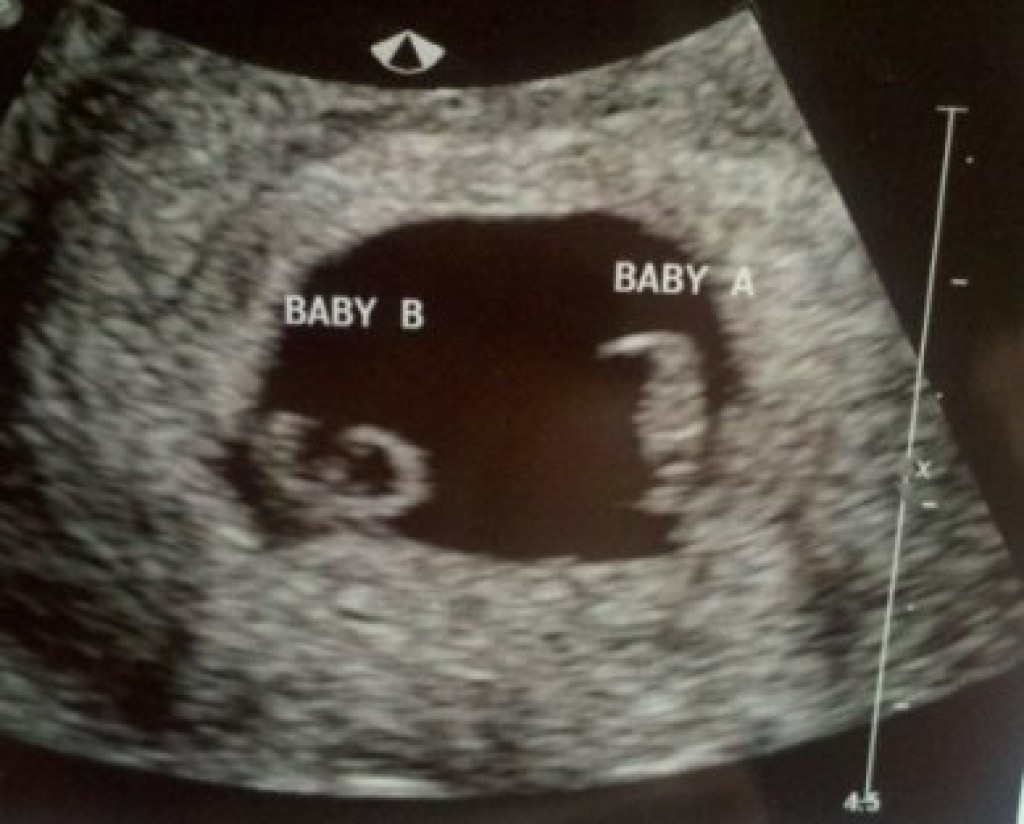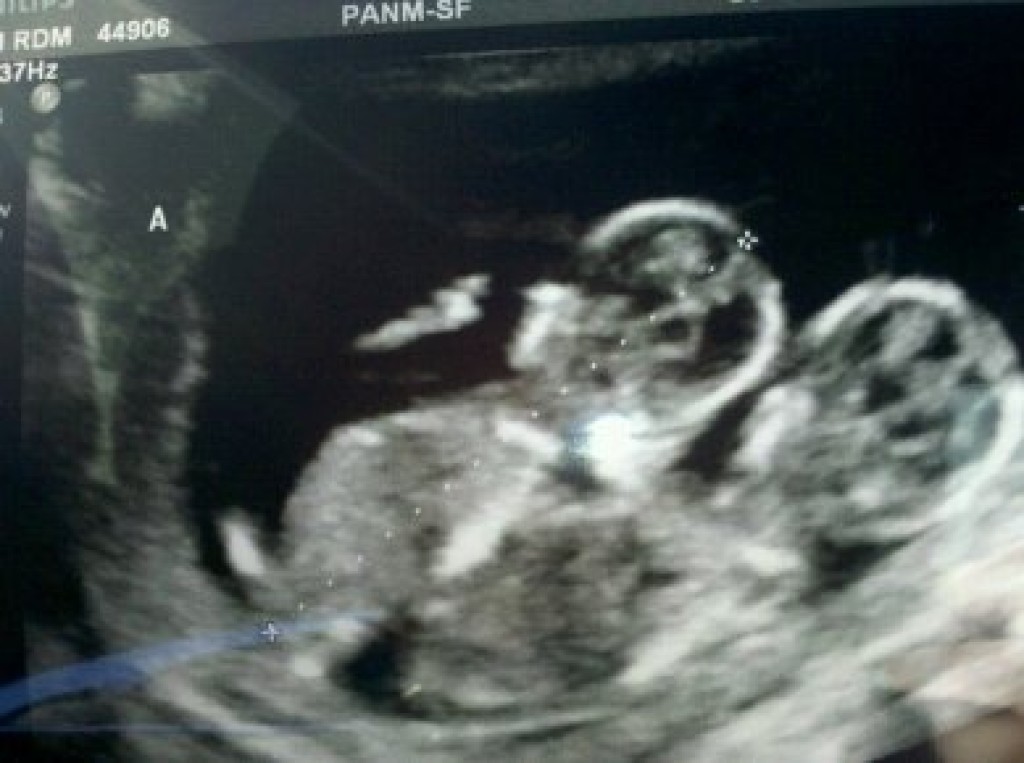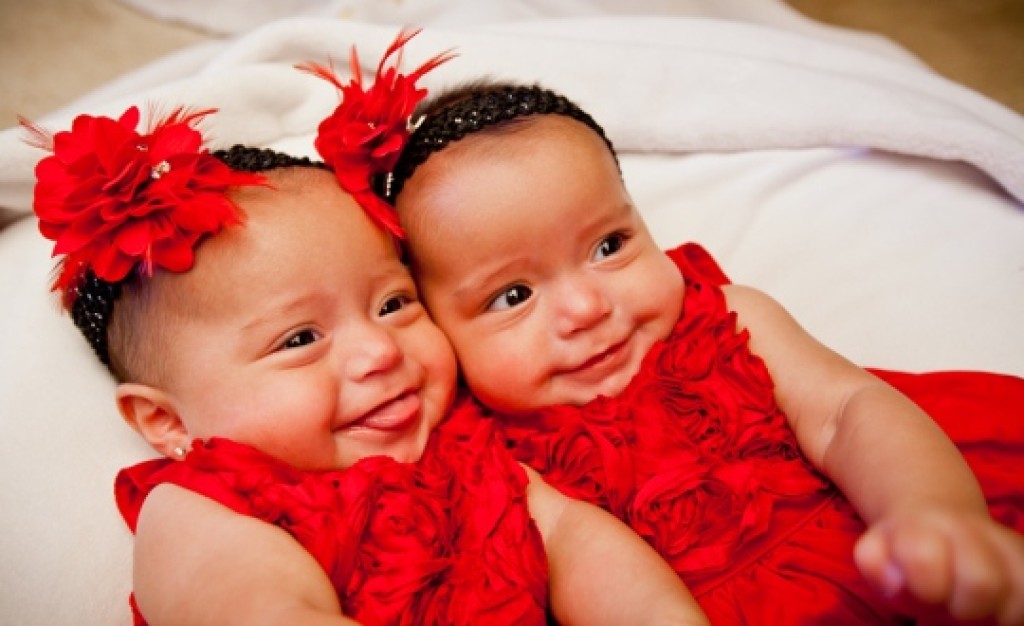My husband and I were surprised last November when the doctors found a 2nd heartbeat at my 6-week ultrasound. At the time we had an 18-month old little boy so the thought of doing what we did with him twice seemed like an impossibility.

A few weeks after our initial ultrasound we found out we were having identical twins and a few weeks after that we discovered that they were girls. The whole idea of tripling our family was sinking in and our excitement grew with every passing day. Unfortunately, our excitement was replaced with fear when our girls were diagnosed with twin-to-twin transfusion syndrome (TTTS), a condition where 1 baby is taking nutrients from the other baby due to an imbalance in the veins in the placenta.
A week prior to the diagnosis I remember feeling like I literally had ballooned. I kept asking my husband if he thought I looked a bit big for 17 weeks and like a good husband he denied any such thing. But when I started having contractions during my workday and feeling pain with the slightest touch to my belly, I knew something was wrong, I just didn't know what it was. By mid-week I was in the Emergency Room trying to get an explanation for the paralyzing contractions I was experiencing. The ER doctor did an ultrasound and I remember him saying "aww... look, one of them is bouncing everywhere and the other is just hanging out." Two days later I was at a perinatal specialist office in New Mexico where a thorough ultrasound was performed and we were diagnosed with TTTS. What we saw on the ultrasound was that 1 baby had a huge pool of fluid that she was growing in and the other was literally saran wrapped by the membrane with barely 2 cm of fluid so she could not move.

The doctor came in and explained that the girls had a rare condition called TTTS and that if we didn't do anything immediately we could lose both babies. She proceeded to tell us that due to amazing advances in medicine in the last 10 years we would be able to reverse TTTS with an ablation (procedure) allowing us to have a chance to give birth to normal babies. She then explained how this procedure was only conducted at special hospitals and that the closest to us was Texas Children's Hospital in Houston, Texas. To our relief she had already contacted the hospital and was already working with the doctors to determine if we were candidates for the ablation. Thank God we were.
We went home armed with a number and a name to call at Texas Children's Hospital and within hours we had been contacted to discuss the next steps. They also provided a video that described TTTS in detail and why the ablation was the best way to reverse the condition and more importantly the success rates of such a procedure. Though it was an emotional day filled with fear and uncertainty, after we watched the video and spoke to the hospital representatives we felt reassured that our daughters were in the right hands. Expert hands. We booked our flight to Houston and we flew out on Monday morning. We were seen the next day and the news was confusing. The TTTS was only in Phase I because we could see the donor baby's bladder. We waited for 10 days hoping to see a change and when that didn't happen our doctors recommended we go home and continue to be monitored by our primary doctor. We returned to New Mexico and 2 days later were seen by our local specialist for the 20-week appointment and follow-up. This appointment showed a new issue, my cervix had shortened substantially from 5 cm to 2.5 cm and there seem to be a funnel. The doctor seeing us was concerned that we would not be candidates for the procedure due to the shortness of my cervix but when he contacted the specialists they agreed that we were still candidates. Instead of waiting days to be seen we flew out the next day to have the procedure performed that morning. We arrived to the hospital from the airport and were immediately admitted at the hospital and the ablation was successfully completed that morning. Hours after the procedure I felt my girls move for the first time. As I rested in the hospital bed with my husband at my bedside feeling our little girls move around in their new, healthy environment, I was overwhelmed with appreciation. I was so thankful that the technology existed, that the doctors were diligent in their decisions and that we were candidates. After the ablation I was put on bed rest for the remainder of the pregnancy. By 23 weeks I went into pre-term labor, which was successfully stopped, and at 32 weeks I gave birth to 2 healthy twin girls. The donor baby who would've been much smaller was actually the bigger of the 2, weighing 4 lbs and the recipient was 3 lbs 8 ounces. They were in the NICU at Presbyterian hospital in Albuquerque, NM for 3 weeks as "feeder, grower" babies. Meaning, they really just had to learn how to eat and gain enough weight to regulate their temperature. Today they are beautiful, healthy 6-month-old babies that are doing all the things babies do, eat, sleep and provide our family with a lot of love.

Author
Natalia Herrera, Patient